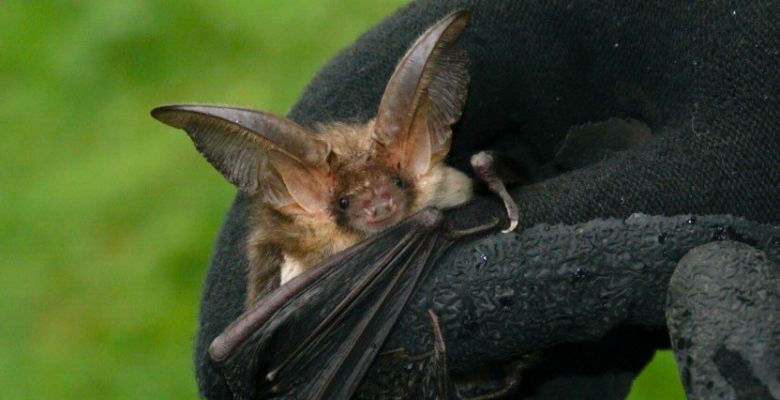Here at EcoEireann and at EcoNorth we all have a passion for bats, and how fitting there is a recognised day for us to share the love on 17th April, on Bat Appreciation Day! (It may be over in the US, but we feel everyday should be Bat Appreciation Day). The bat survey season is almost upon us, so it won’t be long until we’ll be donning our head torches and watching these mysterious creatures whizzing around our heads once again.
Bats are often misunderstood and rightly so with horror stories of rabid, blood sucking, blind creatures that tangle up in your hair. We know this isn’t true of course, so to debunk these myths and to persuade you all to love bats too, we’ve put together our top 10 Reasons To Appreciate Bats:
- We’re family! You may have heard of them being referred to as ‘flying mice’ (or ‘Fledermaus’ in German) but believe it or not, evolution studies show that bats are more closely related to humans than rodents.
- Bats are the second largest group of mammals with estimates of over 1,200 species in the world – 20% of all mammal species are bats! Here in Ireland we have 9 species confirmed resident, whilst in the UK they have 18 species of bats, of which 17 breed there.
- Bats are the only mammals that can fly. A bat’s wing has very similar bones to the hand and arm of a human, with skin stretched between the long finger bones and the body to form a wing. This gives them the ability to actively control their flight.
- Bats can see with their ears. Contrary to popular belief, bats aren’t blind and they can use their eyes, but at night their ears are more important. Bats use ‘echolocation’, effectively shouting as they fly and using the returning echoes to inform them of what is ahead.
- All bats use echolocation to navigate and hunt for their prey in the dark. It is so efficient that they can locate and size up a tiny insect! It is highly unlikely that they’d mistake us for an insect too so they won’t bump into you or be tangled in your hair any time soon…
- The lesser horseshoe bat is a rare bat in the British Isles and is confined to Wales, western England and western Ireland. The Irish population of this species is estimated at 14,000 individuals and is considered of International Importance as it has declined dramatically and become extinct in many other parts of Europe.
- One individual Brandt’s bat was recorded in 2003 in Wicklow, and one greater horseshoe bat in Wexford in 2013. Both species are like to be vagrants since there is no evidence of additional specimens in Ireland.
- In 2010, a new species was added to Britain’s native species list, the Alcathoe bat, going undetected for generations due to its similarity to 2 other native species; whiskered and Brandt’s. In 1997 it was discovered that the pipistrelle is in fact 2 separate species, common and soprano. We have so much yet to learn about bats!
- The average lifespan of Irish bats is thought to be 7-8 years although some have been found over 15 years old. The longest lived bat ever recorded was a Brandt’s bat that had been ringed in Siberia and was re-found in Russia 41 years later!
- And finally – the majority of bats eat insects, including our Irish and UK bats. Rumour has it a common pipistrelle, weighing no more than 5-6g (the weight of 1 Euro!) can consume over 3,000 tiny insects in one night! Hurrah for natural pest control to keep the annoying midges at bay.
So there we have it, 10 Reasons to Appreciate Bats. Click here for more information on the type of bat surveys we offer, or why not get in touch and speak to our bat specialists who will be able to provide you with advice and guidance?

